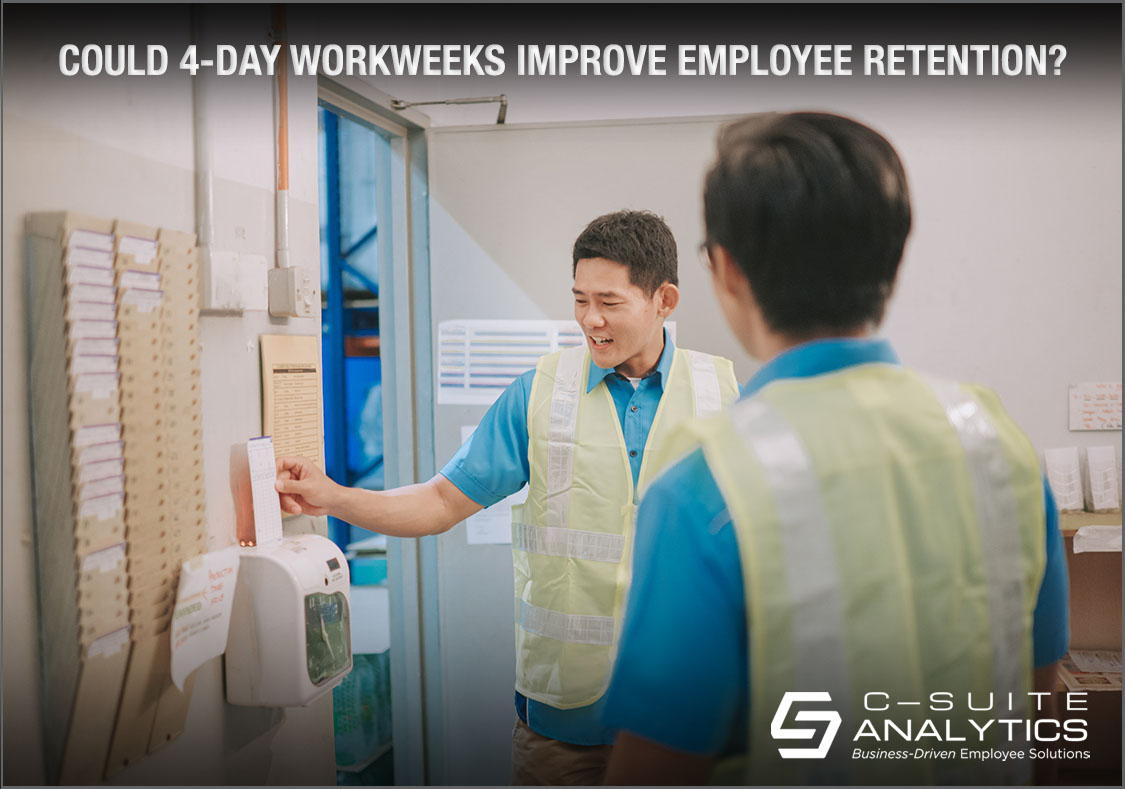Those who have recently immigrated are working, as their workforce participation rate…the percent who hold jobs or are actively looking for jobs…is 67% compared to the overall US average of 62%. So as immigrants continue to strengthen our economy, we have far too much anti-immigration sentiment at our nation’s core, and those feelings must be addressed if we are to attract the best of the best to our country.
Two Real Examples of Stay Interviews’ Connection to Retention Solutions

Stay Interviews as Part of a Five-Step Retention Solution
I spent last week with leaders of a global pharmaceutical company, clients of ours who are worried about employee turnover during The Great Resignation. Each professional level exit there costs six figures, sometimes high six figures because of the scientific expertise of their employees plus the delays in delivering products to their markets. And losing an employee can be just one headhunter call away as those calls have increased since competitor pharmaceutical companies are permitting more employees to work from home. Location no longer matters and relocation is irrelevant.
Our Finnegan’s Arrow employee retention solution includes meeting with managers after they have conducted their Stay Interviews, usually about 60 days after, to learn precisely what their employees told them along with the solutions they applied. We begin the meeting by displaying a pie chart of that group’s retention forecast distribution with greens indicating those employees will stay for twelve months or more, yellow indicating six to twelve months, and red less than six months. Forecasts represent both voluntary and involuntary projected turnover.
Side note here. Asking managers to forecast how long each individual employee on their team will stay is a vastly important, clinching part of initiating leadership retention accountability as each manager now knows that their own manager one level up will ask about those forecasts ongoing…but especially when an employee leaves. A key phrase becomes “Don’t lose a green”.
Stay Interviews Offer Doorway for Managers to Find New Retention Ideas
To re-set the scene, picture groups of about twenty managers whose teams included PhDs, MDs, and other scientifically-trained personnel…smart people talking about how to retain other smart people. Most leaders were onsite plus a handful who had called in with their faces on a large video screen. Financial stakes were high as each potential exit is very costly, plus the managers realize they are accountable for their team’s retention.
Our focus turned to yellows and reds with two ground rules are (1) set aside any performance issues that are the cause of the yellow or red forecast and (2) never say an employee’s name. Each manager presented in-depth details about why they could not bring themselves to forecasting that employee as green, that they were hand-tied to find a retention solution. Two very creative solutions appeared during our day.
In the first, a manager described an employee who had questioned some of the company’s strategic decisions regarding product development. The manager provided specific details of the employee’s concerns, but most importantly that these concerns were strong enough that the manager believed the employee would be leaving soon because of them.
Normally a problem of this complexity would result in the manager looking at me and then others as if to say, “Nothing I can do about the company’s strategic direction so it’s not my fault that this scientist will be walking”. But not on that day. To paraphrase his next words:
“So I got an idea and talked to my manager about it and we all bought in. In the future I plan to invite that employee to join me when I’m going to a meeting about product development. I’ll ask permission from the meeting’s leader in advance of course and plan to do this just once or twice. That way my employee will learn the details behind the product development decisions rather than rely on me to explain those details…and also be able to provide direct input to those who make the decisions.”
Wow. Retention problem plus a very creative and spot-on solution. Imagine how much that employee’s trust for her manager will increase when the manager returns to the employee and says, “Remember when you mentioned your concerns regarding product development? Well, I have an idea and want to see what you think about it.” I’m eager to learn how soon that manager changes his employee’s forecast to green.
Stay Interviews Led to “Walk In My Shoes” Retention Solution
The second great solution of the day regards career development. You might recall I said here in a recent report that “learning” is a better phrase than “careers” because the latter implies everyone wants a career and also that everyone can have one with your company which of course cannot be true. But our turnover data analysis indicated too many of this pharmaceutical company’s high-valued employees were leaving after five years, and the universal opinion of their leaders was there were too many career expectations for two few actual career opportunities. What to do?
The group’s consensus was job posting alone was just not enough. From there grew an idea they called “walk in my shoes”. The idea is to build structure around permitting employees to explore jobs in other departments of interest before those jobs become open. One manager suggested he would give up an employee for a full week for that employee to observe work being done in another department. Another said a full week might be too much but would instead release an employee for one day per week for a couple of months. All agreed they would rather lose their star employees to another department for additional or new responsibilities rather than lose them to a competitor.
The details of “walk in my shoes” will be resolved and presented to this pharmaceutical company’s employees soon. But I believe the greatest lesson from my visit with the leaders of this pharmaceutical company is this:
Managers will find retention solutions when you provide them with retention tools and retention accountability.
One leader introduced a new word, saying from this point forward their company’s employee retention solutions had become “agile”, developed, and delivered by each individual manager versus waiting for traditional one-size-fits-all solutions.
We apply these same processes to all of our clients’ industries…manufacturing, food processing, healthcare, call centers, and more…and their turnover consistently decreases by 20% or more. So the above lesson is the right one and can be universally applied across all aspects of work.
More Than Ever Stay Interviews are Key for Employee Retention
Schedule a conversation with me at DFinnegan@C-SuiteAnalytics.com to discuss your employee retention roadblocks and I’ll share ideas for how you can move forward and what is working for other companies to cut turnover by 20% and more, even during The Great Resignation that may benefit you.



